MY LIST OF THE TOP TEN THINGS ASSOCIATED WITH CORNWALL 〓〓
MY LIST OF THE TOP TEN THINGS
ASSOCIATED WITH CORNWALL
〓〓

So in this post I thought I would create a list, illustrated with my own photos that I have taken of the top ten things that I think are strongly associated with the county where I am from - Kernow (that's Cornwall in the Cornish language). 〓〓
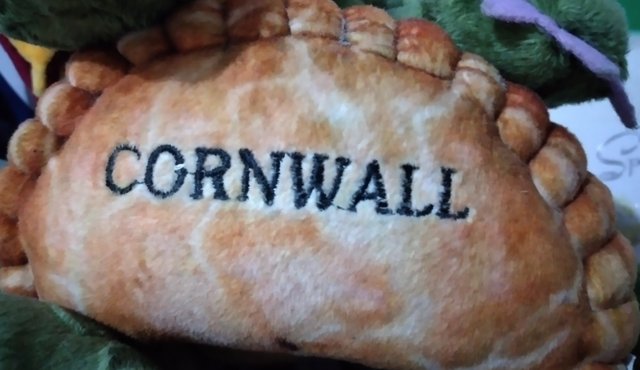
In the past, fishing, farming and tin mining were very important industries and now, fishing and farming are still important, but also the China Clay industry and tourism are vital for the local economy and create a large number of jobs for the local people.
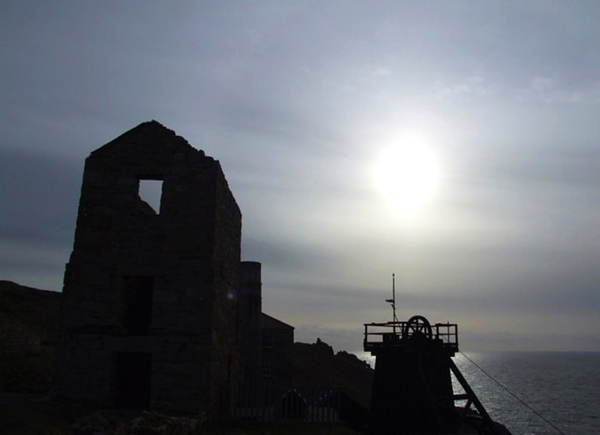
𝟏. 𝐓𝐡𝐞 𝐂𝐨𝐫𝐧𝐢𝐬𝐡 𝐏𝐚𝐬𝐭𝐲 🥟

In the past pasties may have contained 50% sweet, e.g. banana or apple and 50% savoury, such as fish for a complete meal when the miners were down the mines. The crimping around the edge was used as a way of eating the meal without contamination or being poisoned because an element in tin mining was arsenic. After eating the pasty, the crust was thrown away, and as the stories go, they were left to the Knockers - mischievous spirits or gnome-like creatures who lived in the tunnels and mines which both assisted the miners and also played tricks on them.

Today, traditional Cornish pasties contain diced beef (not minced meat!), potato, swede and onion (...and no peas, carrots or gravy either!). The ingredients are encased in pastry, usually shortcrust pastry, and cooked raw in the oven until the pastry is golden brown (about 40 minutes). The reason for this is the meat creates its own juice or gravy as it's cooked and mixes with the rest of the ingredients so the pasty's contents is juicy and succulent. It is a symbol of Cornwall and the Cornish people (well I think so!).
𝟐. 𝐂𝐥𝐨𝐭𝐭𝐞𝐝 𝐜𝐫𝐞𝐚𝐦 𝐚𝐧𝐝 𝐭𝐡𝐞 𝐂𝐫𝐞𝐚𝐦 𝐓𝐞𝐚 🫖

There is a debate whether the jam or cream goes on the scone first; if you are from Devon the cream is applied first and then a dollop of jam is put on top. However, if you are from Cornwall, it's vice versa, you always put the jam on first, followed by the clotted cream. However you eat your scone and have your cream tea, just enjoy it...it's delicious!
𝟑. 𝐁𝐞𝐚𝐮𝐭𝐢𝐟𝐮𝐥 𝐛𝐞𝐚𝐜𝐡𝐞𝐬, 𝐜𝐨𝐚𝐬𝐭𝐥𝐢𝐧𝐞 𝐚𝐧𝐝 𝐬𝐮𝐫𝐟𝐢𝐧𝐠 🏄
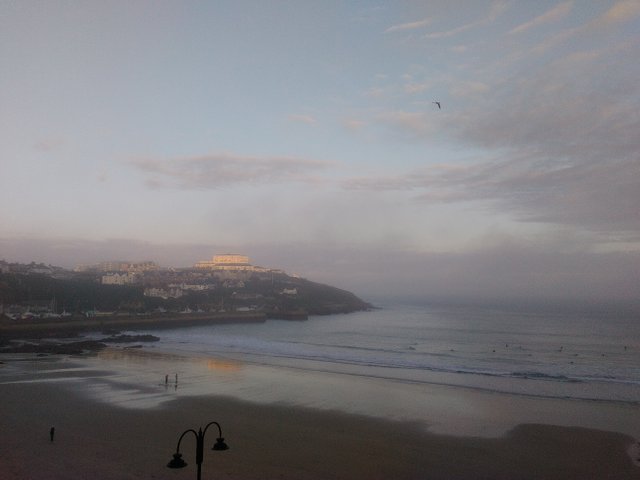
𝟒. 𝐀 𝐪𝐮𝐢𝐞𝐭, 𝐫𝐞𝐥𝐚𝐱𝐞𝐝, 𝐥𝐚𝐢𝐝-𝐛𝐚𝐜𝐤 𝐥𝐢𝐟𝐞 𝐚𝐧𝐝 𝐚𝐭𝐭𝐢𝐭𝐮𝐝𝐞 😎
𝟓. 𝐓𝐢𝐧 𝐦𝐢𝐧𝐢𝐧𝐠, 𝐭𝐢𝐧 𝐦𝐢𝐧𝐞𝐬, 𝐭𝐡𝐞 𝐦𝐢𝐧𝐢𝐧𝐠 𝐡𝐞𝐫𝐢𝐭𝐚𝐠𝐞 𝐚𝐧𝐝 𝐜𝐮𝐥𝐭𝐮𝐫𝐞, 𝐢𝐧𝐜𝐥𝐮𝐝𝐢𝐧𝐠 𝐦𝐢𝐧𝐞𝐫𝐬 𝐡𝐨𝐮𝐬𝐞𝐬, 𝐦𝐢𝐧𝐢𝐧𝐠 𝐜𝐨𝐦𝐦𝐮𝐧𝐢𝐭𝐢𝐞𝐬 𝐚𝐧𝐝 𝐭𝐡𝐞 𝐓𝐕 𝐬𝐞𝐫𝐢𝐞𝐬 "𝐏𝐨𝐥𝐝𝐚𝐫𝐤" ⚒️

There are many mines and engine houses dotted around the landscape in Cornwall, some are derelict, some have been converted into houses or property and others have been made into museums to retell the Cornish heritage. In 2015, a TV series called Poldark was aired. It is based on the novels of the same title. The TV series has been sold to America so you can say it has become a global hit. In the story, the main character (Captain Ross Poldark) returns back to Cornwall after the American War of Independence in 1783 and inherits the family's derelict mines and hopes to create a lucrative business. The series was filmed in Cornwall, including the mines and other locations. Poldark Mine is now a heritage centre which you can visit located near the Cornish town of Helston.
𝟔. 𝐊𝐢𝐧𝐠 𝐀𝐫𝐭𝐡𝐮𝐫 𝐚𝐧𝐝 𝐭𝐡𝐞 𝐊𝐧𝐢𝐠𝐡𝐭𝐬 𝐨𝐟 𝐭𝐡𝐞 𝐑𝐨𝐮𝐧𝐝 𝐓𝐚𝐛𝐥𝐞 👑

The bronze statue of King Arthur located on Tintagel island
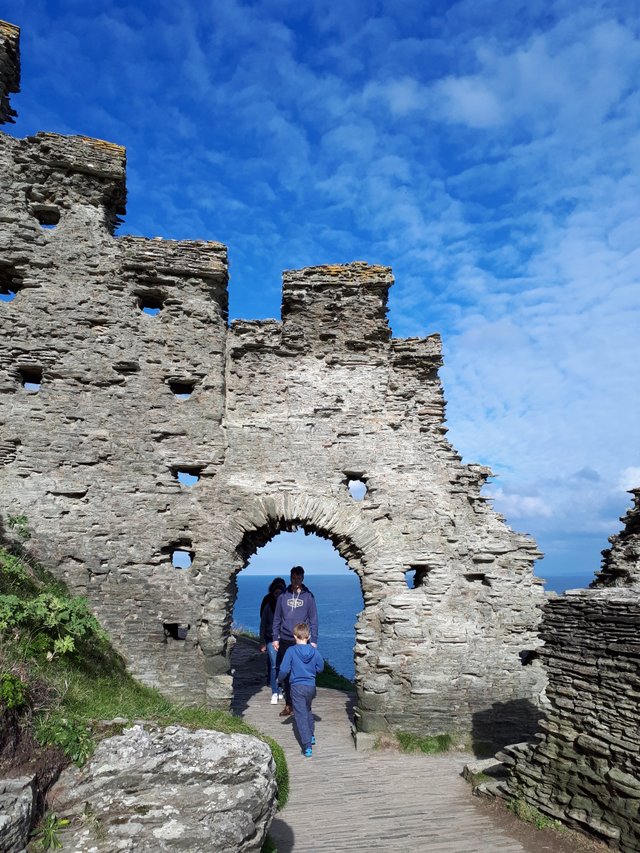
The entrance to Tintagel Castle
According to some stories and legends, Tintagel Castle in Cornwall was the birthplace of King Arthur. The ruins, located on the island, is actually a much later structure, from the 13th Century. However, the island was an important stronghold and probably a residence of rulers of Cornwall from the 5th to the 7th century AD and was used to trade the vital commodity tin (used in the smelting of bronze) with other countries around the world. Tintagel castle nestles on the edge of the cliffs next to the Atlantic Ocean in North Cornwall so it is a dramatic setting that conjures up images of battles, warriors and magic from days of old.
𝟕. 𝐂𝐨𝐫𝐧𝐢𝐬𝐡 𝐖𝐫𝐞𝐬𝐭𝐥𝐢𝐧𝐠 🤼
The rules and the names of the throws can be found in the wikipedia link here which gives a very detailed description of this sport with both the names in Cornish and the colloquial Cornish names (e.g. Teddy Bag Heave and Scat un Back). Cornishmen are very proud of this heritage and there are stories of Cornish wrestling champions which are still remembered and discussed today.
𝟖. 𝐐𝐮𝐚𝐢𝐧𝐭 𝐟𝐢𝐬𝐡𝐢𝐧𝐠 𝐯𝐢𝐥𝐥𝐚𝐠𝐞𝐬 𝐚𝐧𝐝 𝐟𝐢𝐬𝐡𝐞𝐫𝐦𝐞𝐧 ⛵
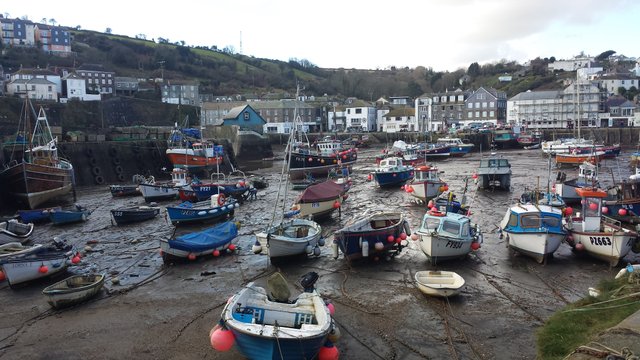
𝟗. 𝐓𝐡𝐞 𝐂𝐨𝐫𝐧𝐢𝐬𝐡 𝐋𝐚𝐧𝐠𝐮𝐚𝐠𝐞, 𝐥𝐨𝐜𝐚𝐥 𝐚𝐜𝐜𝐞𝐧𝐭, 𝐭𝐡𝐞 𝐥𝐨𝐜𝐚𝐥 𝐩𝐞𝐨𝐩𝐥𝐞, 𝐢𝐧𝐜𝐥𝐮𝐝𝐢𝐧𝐠 𝐟𝐚𝐫𝐦𝐞𝐫𝐬 𝐚𝐧𝐝 𝐭𝐡𝐞 𝐬𝐭𝐞𝐫𝐞𝐨𝐭𝐲𝐩𝐞𝐬 〓〓
There are many stereotypes related to the people of the West Country, including the Cornish. For example, people from cities or from upcountry (basically any place north of Cornwall - which is the whole country), people may think the locals are slow, thick (stupid) and inbred and don't know about the world and real life as they've had a sheltered life and haven't travelled much. Generally, the locals have a calmer, chilled out attitude and approach to everything, including life in general.
𝟏𝟎. 𝐒𝐦𝐮𝐠𝐠𝐥𝐢𝐧𝐠, 𝐬𝐦𝐮𝐠𝐠𝐥𝐞𝐫𝐬, 𝐚𝐧𝐝 𝐩𝐢𝐫𝐚𝐭𝐞𝐬 🏴☠️

Cornwall, as well as the coast of Devon and other parts of England were known for their pirates and other illegal activity. However, the Cornish and Devon coasts were also targets from pirates from other countries and raids and kidnapping were common. Now, one group of pirates still exist - The Cornish Pirates, the name of the professional, premier Cornish rugby team located in Penzance!

This is me wearing a suit of armour outside of King Arthur's Great Hall, Tintagel, Cornwall
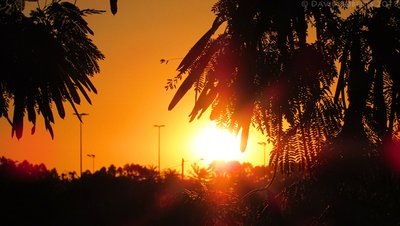
https://steemit.com/@daverobe
I love Cornwall and of course know many typical Cornish staff, of course delicious cornish pasty!!! But also love the history and pirates, always envy the coasts and beautiful ships :)
You post is nominated for „Wold of xpilar“ Community Support Program, @booming account upvote. Only the posts that are not cross posted, original and posted from community page are eligible. If your post gets approval, then you get upvote within few days. Good luck!
Thanks @stef1! So what is your favourite thing connected to Cornwall? 😊
Jam should always go on first. How you're supposed to spread jam on top of cream is a mystery to me.
When I saw the post title, I wondered how you're get to 10 without just listing a load of beaches but you've done a marvellous job. If you value your life, never go to that top bit of Tintangel on a windy day!
Thank you Mr. @the-gorilla for your comment and input. I suppose people always rave on about the beautiful Cornish beaches and coastline but it's just part of everyday life when you live there. In 2019, they built a new footbridge across to Tintagel castle and island which allows easy access.